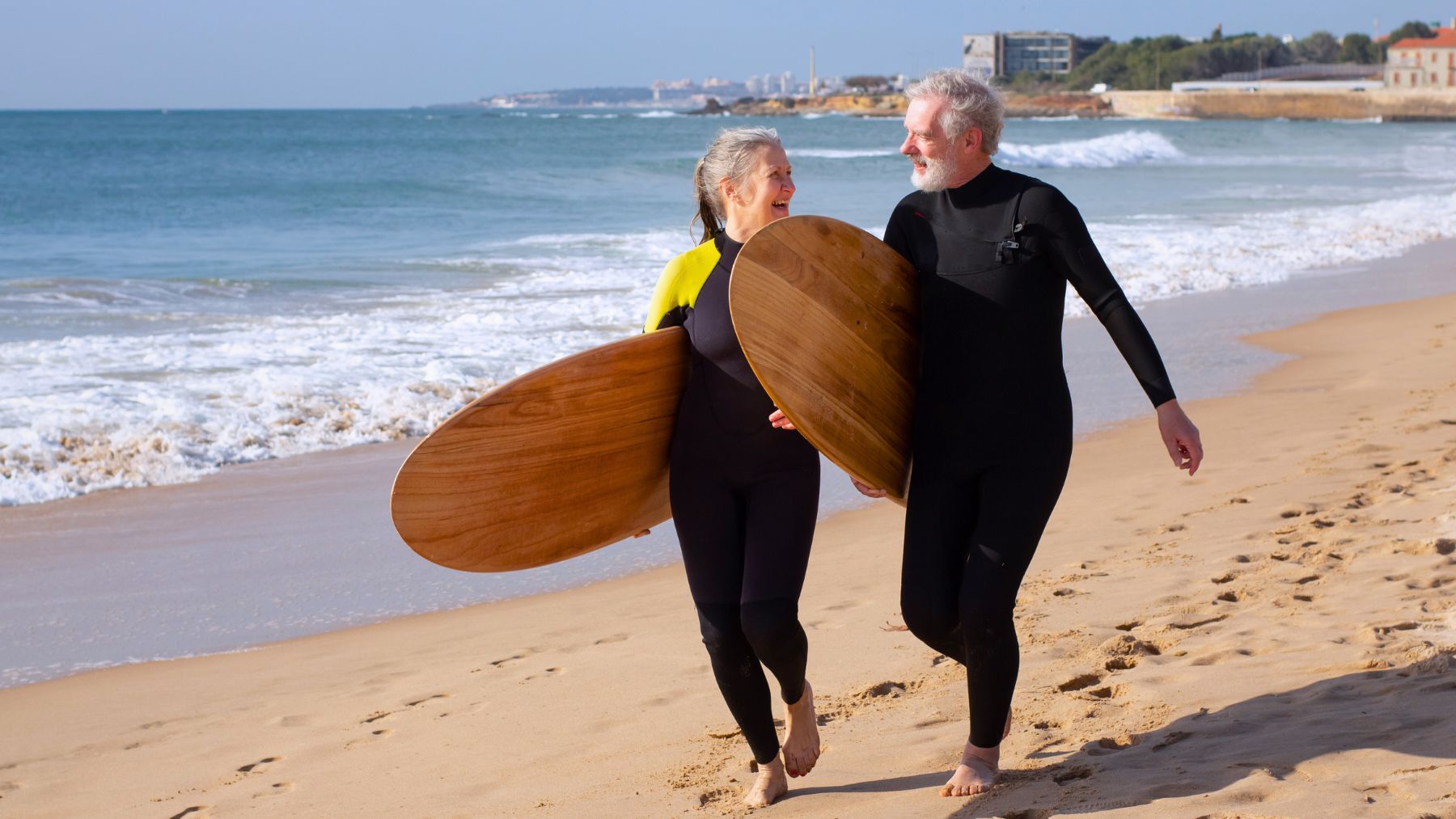A stroll by the water is relaxing, but for older adults, there’s another beach activity that offers more health benefits. It’s gentle on the joints, boosts strength, and improves mood, and the only equipment you need is a swimsuit.
That activity is swimming in the sea, which combines the advantages of exercise with the therapeutic properties of saltwater and coastal air. Here, we’ll look at how swimming at the beach can improve physical, mental, and emotional health for seniors, plus a few tips to make it safe and enjoyable.
Why swimming at the beach is so good for seniors
Swimming is a low-impact exercise, which means it’s easier on aging joints compared to activities like running or aerobics. The water supports the body, reducing strain on knees, hips, and the spine, while still allowing you to move muscles through a full range of motion. This makes it ideal for people with arthritis, osteoporosis, or chronic pain.
The natural resistance of seawater is greater than that of a pool, so every stroke and kick works muscles more effectively. Over time, this helps maintain muscle mass, build endurance, and improve cardiovascular health. Stronger muscles and better balance can also lower the risk of falls, a common concern for older adults.
Besides, swimming at the beach has other benefits beyond fitness. Saltwater contains minerals that can help with skin conditions like eczema or dermatitis, and gentle exposure to sunlight supports vitamin D production, which is essential for bone health. The rhythmic movement of swimming, combined with the sound of waves and fresh ocean air, can also lower stress hormones and promote relaxation.
For those struggling with sleep, swimming is ideal. The combination of physical exertion, fresh air, and mental relaxation often leads to deeper, more restorative rest. Studies have shown that spending time near “blue spaces” like the ocean can reduce anxiety and improve overall mood, effects that can be especially valuable in later life.
How to swim safely at the beach after 60
While swimming offers many benefits, open water can present more risks than swimming in a pool. Taking a few precautions can ensure you get the advantages without the hazards.
- Choose calm conditions: Swim when the sea is calm, avoiding strong waves or rip currents. Check local weather and tide reports before heading out.
- Stay close to shore: Keep within a comfortable distance where you can touch the bottom if needed. This also makes it easier for lifeguards to assist in an emergency.
- Swim with company: Having a partner or joining a senior swimming group adds safety and makes the activity more social.
- Wear protective gear: A swim cap and goggles can improve visibility and comfort. In cooler water, a wetsuit helps maintain body temperature.
- Pace yourself: Start with short sessions and gradually increase time in the water to avoid overexertion.
- Know your limits: If you feel tired, cold, or short of breath, return to shore immediately.
By combining these safety measures with regular practice, seniors can enjoy swimming as a sustainable, health-boosting habit. Walking along the shore is pleasant, but for those looking to improve strength, balance, and mood while enjoying the beach, swimming is a great choice.

